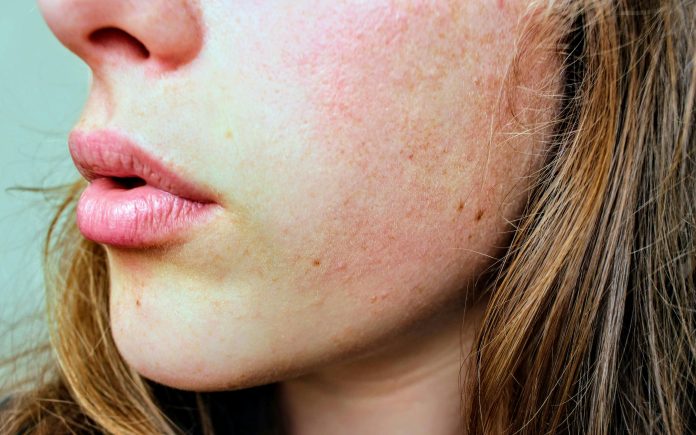Non-blanchable skin can be a perplexing condition to understand. It’s more than just a change in skin color; it can be a sign of underlying health issues that need attention. Let’s dive into what non-blanchable skin is, its causes, symptoms, and how to manage it effectively.
What is Non-Blanchable Skin?
To understand this skin, we first need to talk about blanching. When you press on healthy skin, it turns white and then quickly returns to its normal color. This is known as blanching. Non-blanchable skin, however, does not turn white when pressed. This can indicate that the skin is not getting enough blood flow or has sustained damage.
Causes of Non-Blanchable Skin
Several factors can lead to this skin issue. Here are some common causes:
Pressure Ulcers
Pressure ulcers, also known as bedsores, are a primary cause of non-blanchable skin. They occur when there is prolonged pressure on the skin, often in people who are bedridden or have limited mobility.
Infections
Skin infections can also lead to non-blanchable areas. Bacterial infections, in particular, can cause inflammation and damage to the skin tissues.
Trauma
Any kind of trauma to the skin, such as cuts, bruises, or burns, can result in non-blanchable spots. The damaged area might not blanch due to underlying tissue injury.
Underlying Medical Conditions
Certain medical conditions, like vascular diseases or diabetes, can affect blood flow and skin health, leading to this skin issue.
Symptoms and Signs
Identifying non-blanchable skin involves looking for areas that do not change color when pressed. These areas might also be accompanied by other symptoms like pain, swelling, or changes in skin texture. Commonly affected areas include heels, hips, and lower back.
Diagnosing Non-Blanchable Skin
Diagnosing this skin issue often requires a thorough medical history and physical examination. Healthcare providers might perform diagnostic tests, including skin biopsies or blood tests, to determine the underlying cause.
Stages of Non-Blanchable Skin
Non-blanchable skin can be classified into different stages based on the severity of the damage:
Stage 1: Non-blanchable Erythema
This is the initial stage where the skin appears red and does not blanch. It’s usually an early sign of pressure ulcers.
Stage 2: Partial Thickness Skin Loss
At this stage, there is partial loss of skin layers, and the area may look like a blister or open sore.
Stage 3: Full Thickness Skin Loss
This stage involves the loss of the entire skin thickness, exposing underlying fat tissue.
Stage 4: Deep Tissue Injury
In the most severe stage, there is significant tissue damage, which may extend to muscles and bones.
Complications Associated with Non-Blanchable Skin
If left untreated, this skin issue can lead to several complications:
Infections
The damaged skin can become a breeding ground for infections, leading to more severe health issues.
Tissue Damage
Persistent this skin issue can result in deeper tissue damage, causing chronic wounds that are difficult to heal.
Chronic Wounds
Chronic non-blanchable areas may develop into long-term wounds, requiring extensive medical care.
Preventing Non-Blanchable Skin
Prevention is key when it comes to non-blanchable skin. Here are some strategies to keep in mind:
Regular Skin Inspections
Regularly check your skin, especially if you’re at risk for pressure ulcers. Early detection can prevent severe damage.
Proper Hygiene
Maintaining good hygiene helps prevent infections that could lead to non-blanchable skin.
Pressure Relief Techniques
Use pressure-relieving devices, such as special mattresses or cushions, to reduce the risk of pressure ulcers.
Treatment Options
If you have non-blanchable skin, several treatment options are available:
Topical Treatments
Applying topical creams and ointments can help heal the skin and prevent infections.
Medical Interventions
In some cases, medical treatments like antibiotics or debridement (removal of dead tissue) may be necessary.
Surgical Options
For severe cases, surgical interventions might be required to remove damaged tissue and promote healing.
Home Remedies and Care
Taking care of this skin at home involves:
Moisturizing
Keeping the skin moisturized can prevent dryness and further damage.
Proper Nutrition
A healthy diet rich in vitamins and minerals supports skin health and aids in healing.
Avoiding Pressure
Avoid putting pressure on affected areas by changing positions frequently.
Role of Healthcare Providers
Healthcare providers play a crucial role in managing this skin issue. They can:
Importance of Professional Care
Provide professional care and guidance to ensure proper treatment and recovery.
Developing a Treatment Plan
Help develop a personalized treatment plan that addresses the underlying cause and promotes healing.
Living with Non-Blanchable Skin
Living with this skin issue requires ongoing care and management. Here are some tips:
Daily Care Routines
Establish a daily care routine to keep your skin healthy and prevent complications.
Managing Symptoms
Learn to manage symptoms effectively to maintain a good quality of life.
Emotional and Psychological Impact
This skin can also have an emotional and psychological impact. It’s important to:
Coping Strategies
Develop coping strategies to deal with the emotional toll of living with a chronic condition.
Support Systems
Build a support system of friends, family, and healthcare providers to help you navigate the challenges.
FAQs About Non-Blanchable Skin
What does this skin indicate?
This skin can indicate underlying issues such as pressure ulcers, infections, or trauma.
Can this skin be reversed?
With proper treatment and care, some non-blanchable skin conditions can improve, but it depends on the underlying cause.
How can caregivers help?
Caregivers can assist by performing regular skin inspections, ensuring proper hygiene, and helping with pressure relief techniques.
Are there any specific products recommended?
Yes, products like pressure-relieving cushions, moisturizing creams, and specialized dressings can be beneficial.
When should I see a doctor?
If you notice this skin or other concerning symptoms, it’s important to seek medical advice promptly.
Conclusion
Understanding this skin is crucial for preventing and managing this condition effectively. Early detection, proper care, and professional guidance are key to maintaining skin health and preventing complications. By staying informed and proactive, you can ensure the best possible outcomes for your skin.


